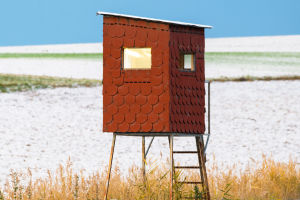Agriculture has undergone significant transformations over the past few centuries, and one of the most impactful innovations has been the development of the tractor with a crop seeder.
This powerful combination has revolutionized the way crops are planted, leading to increased efficiency, higher yields, and more sustainable farming practices.
Let's explore the effects of tractors with crop seeders on modern agriculture, highlighting their benefits, challenges, and overall impact on the industry.
Increased Efficiency and Productivity
One of the most significant effects of using tractors with crop seeders is the dramatic increase in efficiency and productivity. Before the advent of mechanized seeding, farmers relied on manual labor or animal-drawn equipment to plant seeds, a process that was time-consuming and labor-intensive. With the introduction of tractors equipped with crop seeders, the planting process has become much faster and more precise. A tractor with a crop seeder can cover large areas of land in a fraction of the time it would take using traditional methods, allowing farmers to plant more crops in a shorter period.
This increase in efficiency has a direct impact on productivity. Farmers can now plant more seeds in less time, leading to larger harvests and higher yields. This is particularly important in regions where the growing season is short, as it allows farmers to make the most of the available time and maximize their output. Additionally, the precision of modern crop seeders ensures that seeds are planted at the optimal depth and spacing, which further contributes to higher yields and healthier crops.
Reduced Labor Costs
The use of tractors with crop seeders has also led to a significant reduction in labor costs. In the past, planting crops required a large workforce to manually sow seeds, which was both expensive and physically demanding. With mechanized seeding, the need for manual labor has been greatly reduced. A single operator can now manage the entire planting process, freeing up labor for other tasks or reducing the overall number of workers needed on the farm.
This reduction in labor costs is particularly beneficial for large-scale farms, where the savings can be substantial. It also allows smaller farms to remain competitive, as they can achieve similar levels of efficiency without having to hire additional workers. The money saved on labor can be reinvested in other areas of the farm, such as purchasing better-quality seeds, improving irrigation systems, or investing in new technology.
Environmental Impact and Sustainability
The use of tractors with crop seeders also has positive effects on the environment and sustainability of farming practices. Modern seeders are designed to minimize soil disturbance, which helps to preserve soil structure and reduce erosion. This is especially important in no-till or conservation tillage systems, where maintaining soil health is crucial for long-term productivity.
In addition to reducing soil disturbance, tractors with crop seeders can also contribute to more efficient use of resources. Precision planting ensures that seeds are placed exactly where they are needed, reducing waste and minimizing the need for additional inputs such as water and fertilizer. This not only saves money but also reduces the environmental footprint of farming operations.
Moreover, the ability to plant crops more quickly and accurately allows for better crop rotation and diversification, which are key components of sustainable agriculture. By rotating crops and planting a variety of species, farmers can improve soil health, reduce pest and disease pressure, and enhance biodiversity on their land.
Challenges and Considerations
While the benefits of using tractors with crop seeders are clear, there are also some challenges and considerations to keep in mind. One of the main challenges is the initial cost of purchasing and maintaining the equipment. Tractors and crop seeders can be expensive, especially for small-scale farmers or those in developing regions. Additionally, the cost of fuel, maintenance, and repairs can add up over time.
Another consideration is the potential for over-reliance on mechanization. While tractors with crop seeders can greatly improve efficiency, they also require skilled operators who are familiar with the equipment and its maintenance. In some cases, the loss of traditional knowledge and skills can be a downside, as farmers may become dependent on technology and less adaptable to changes in their environment or circumstances.
The introduction of tractors with crop seeders has had a profound impact on modern agriculture, leading to increased efficiency, higher productivity, and more sustainable farming practices. While there are challenges associated with the use of this technology, the benefits far outweigh the drawbacks. As the agricultural industry continues to evolve, the use of mechanized seeding will likely play an increasingly important role in feeding the growing global population while preserving the health of our planet.


